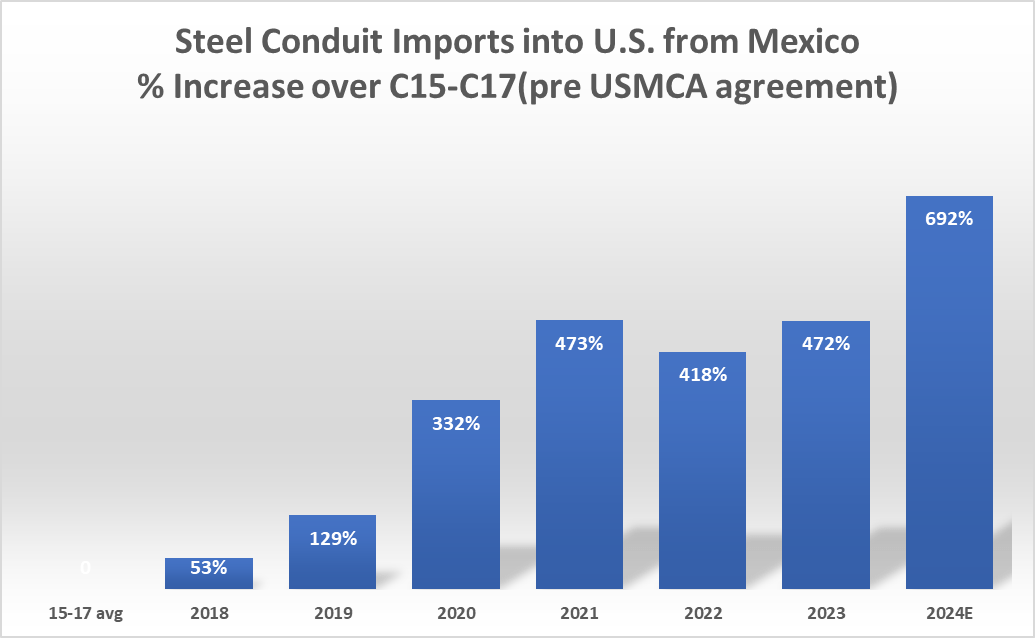
As Jeff Faux notes, we seem to have reached the part of the debate over the TPP when facts and evidence have largely given way to table-pounding. But given that this is still a live debate and that silly arguments continue to proliferate, here are a couple of clarifications that might be helpful to the debate:
[by Josh Bivens | May 15, 2015 | Economic Policy Institute]
First, a vote for the TPP is a vote to reduce the wages of most American workers and increase inequality. Yes, policies that boost U.S. imports (like the TPP) raise total national income in the United States, but they also redistribute so much more income within the United States that most workers are made worse off. And to be clear about this, the losses are not just the workers directly displaced by trade. Instead, it’s the wages of all workers in the economy who compete with the trade-displaced workers for other jobs—about 100 million workers in all. The way to think of it is that landscapers and waitresses don’t lose their jobs to trade, but their wages suffer from having to compete with laid-off apparel workers looking for work elsewhere.
Now, it’s true that the TPP would reduce wages for most Americans and increase inequality just a little bit. But that’s the direction. And it’s also true that expanded trade can potentially benefit everybody if the winners compensate the losers, but that would require complementary compensatory policies, and ones on a scale much, much larger than the Trade Adjustment Assistance (TAA) often throws in with trade agreements.
And while TPP proponents low-ball the wage-suppressing effect of TPP, they often exaggerate the overall benefits for national income. But the source of both gains and losses from trade are the same: domestic reshuffling of production that sees importable sectors shrink and export sectors expand. So how big are the TPP’s estimated income benefits? Not very big—it’s estimated to increase U.S. GDP by about 0.4 percent cumulatively over the next 12 years, according to a paper by Petri and Plummer (2012) for the Peterson Institute for International Economics (PIIE). Yesterday, the normally-sharp Adam Posen (President of PIIE) put these benefits in an interview at a few tenths of a percent of GDP each year. That’s clearly wrong, even by his own shop’s estimates (roughly ten times higher than what the Petri and Plummer (2012) paper shows). Posen claimed on Twitter that this 0.4-percent-over-12-years estimate was “a lower bound” that “doesn’t show dynamic gains from productivity growth thru competition”. But that’s not right—the Petri and Plummer (2012) PIIE estimate is actually a significant increase relative to an earlier estimate by the same authors, and they justify the newer higher estimate exactly by saying they’re now incorporating estimates of productivity gains stemming from more-competitive firms gaining market share after TPP’s passage.*
Second, I have occasionally heard the argument that estimates of the wage-suppressing effects of expanded trade with labor-abundant countries are somehow not germane to debates over TPP because these estimates do not isolate the effect of trade agreements; instead they just measure the effect of expanded trade writ large, regardless of what caused the expansion of trade. This is half-true. For example, here I do take the effect that others have estimated of putting pen to paper on the TPP and assessed its impact on wages (hint: they’re negative for most workers, albeit small). But the larger issue is simply that the entire point of the TPP is to expand trade. If it succeeds, it will hence lower wages for most American workers. Again, you might argue it will only lower these wages a little—and you’d be largely right. But that’s the direction. And again, if there is a very small wage effect because the TPP won’t really change trade flows much, then there will also be very small overall growth effects.
Third, an argument related to the “trade and trade agreements are different things” obfuscation is the claim that lots of the increase in trade in recent decades that dragged on American wage-growth (and led to trade deficits that displaced manufacturing jobs) came from China, and we don’t have a trade agreement with China, so one cannot blame trade policy for this outcome. Hence, the argument goes on to say that none of this evidence on the effect of expanded trade on American wages is admissible in the TPP debate. This is an absurd argument. Again, the point of trade agreements is to trade even more. So, is the argument that we will negotiate a trade agreement with China someday that will lead to less trade? Or that if we had signed a trade agreement with China we would have traded less in recent decades? That would have been an odd outcome. And, in fact, researchers actually have shown that much of the growth in trade with China stemmed from intentional trade policy decisions—the permanent normalization of trade relations with China and China’s entry into the WTO.
Fourth, an argument is making the rounds that while trade did damage to American workers in the past, that’s now behind us. The argument seems to be that like grunge and Friends, trade’s impact on wages belongs firmly to the 1990s. There is zero evidence for this view. For one, the latest empirical study of the effect of increased imports on American wages runs through 2007 and finds that these effects are large. For another, it would be odd indeed if the wage-depressing effect of trade had relented in 2000 just as the world’s largest economy and one that is much more labor-abundant than our other trading partners (China) began exporting to us in serious measure. To put the rise in Chinese imports in perspective, realize that average productivity in China in 2000 was just a quarter as high as it was in Mexico. So the idea that just as a much larger and much poorer trading partner became a major force we should suddenly have seen the drag on American wages relent is pretty counter-intuitive. Finally, direct estimates of whether or not the U.S. economic activity and employment responds to low-wage imports—i.e., is still affected by international competition—is pretty clear on this: U.S. manufacturing absolutely is strongly affected by rising imports from low-wage countries.
Fifth, there is an argument that because barriers to imports coming into the United States are already low, the TPP will just allow us to boost exports without increasing imports. Hence, it will be all-gain-no-pain. This is false, for reasons I lay out here. The first big reason it’s false is because there is no provision to stop currency management in the TPP. So, any decline in import tariffs in trading partners that is engineered in the TPP can be swamped if these same partners decide to lower the value of their own currency vis-à-vis the dollar. The second big reason is related to our next issue: ISDS.
Sixth, much debate on the TPP has concerned its investor-state dispute settlement (ISDS) mechanisms. ISDS provisions allow companies to sue governments over policy and regulatory changes that impact the companies’ commercial prospects. The point of ISDS provisions in trade treaties was historically supposed to be to provide protection for international investors against weak judicial systems and insufficient property right protections that sometimes characterized less-developed economies. In the context of claims that the TPP will be all-gain-no-pain, David Dayen says it well—rule of law should be a comparative advantage for the United States. Blunting this advantage by imposing ISDS on developing country trade partners could lead to more foreign investment in their export sectors, which could increase imports to the United States and adverse wage impacts from that channel. In short, claims that the TPP would be all-gain-no-pain would be much more convincing if it did have a currency provision and did not have ISDS provisions.
The Obama administration and other proponents of the TPP have effectively sneered at concerns over ISDS provisions recently, noting that the United States has never lost a case before an ISDS panel, with the strong implication that the United States’ strong rule of law makes it highly unlikely for this provision to ever undercut U.S. policies or regulatory regimes. But claims that only countries with weak judicial systems and no respect for property rights will be affected by ISDS proceedings seems belied by the fact that Canada has been the object of dozens of ISDS cases under the NAFTA provisions, and has indeed lost several of these cases. Maybe there’s some compelling reason to think the rule of law in commercial transactions is much better established in the United States than Canada, but the mammoth mortgage fraud during the mid-2000s in the United States that contributed to the economy-wrecking housing bubble (which somehow remains largely unpublished today) makes me doubt it.
Moreover, claims that ISDS panels more frequently side with governments over investors doesn’t account for the fact that nearly a third of such cases are settled before judgement, an outcome most scholars studying this issue count as at least a partial victory for the investor.
Additionally, what some might see as ISDS simply protecting property rights others might see as ISDS potentially constricting some countries’ policy autonomy. Take the case of Phillip Morris suing Australia (again, hardly anybody’s exemplar of a banana republic that should have property rights law dictated to them by trade agreements) over its decision to ban company logos on cigarette packs. While that case is still ongoing, it has already contributed to New Zealand overturning a regulatory decision to mimic the Australian policy. The argument for why the United States need not really be concerned about ISDS provisions really comes down to the claim that these allow U.S. corporations to batter down other countries’ regulations, but has not been unleashed on our own so far. This is not a very compelling reason to include these in trade treaties, particularly since research shows that the development benefits of simply boosting inward FDI are ambiguous enough to make the loss of policy autonomy that accompanies ISDS provisions even more troubling.
Finally, add together the ISDS provisions and the provisions that will force foreign consumers to pay higher prices for software and pharmaceuticals by changing foreign governments’ intellectual property law and you realize that this agreement will simply amplify the regressive distributional consequences that would be the result of moving toward even genuine free trade without any compensatory policies. All in all, it’s very hard to see what’s in this deal for the American middle-class, and it’s even harder to see what’s in it for consumers in our poorer trading partners.
*Concretely, their footnote says:
- The modeling framework is based on recent developments in heterogeneous-firms trade theory, in contrast to the country-differentiated-goods approaches of past studies. This theoretical structure helps to correct the systematic underestimation of benefits that emerges in retrospective studies of the actual and projected effects of substantial free trade agreements. For a full description of the model, see Fan Zhai, “Armington Meets Melitz: Introducing Firm Heterogeneity in a Global CGE Model of Trade,” Journal of Economic Integration 23, no. 3, September 2008, 575–604.
And, from the cited paper:
One attractive feature of the new firm-heterogeneity trade models is that they provide an explicit microeconomic channel through which trade liberalization boosts aggregate productivity. Under these models, productivity gains originate from the reallocation of economic activity across firms within an industry, as low productivity firms exit and high productivity exporting firms expand their market shares following the trade liberalization. The productivity effects of trade liberalization are key factors for understanding the impact of trade liberalization, but are often missed in CGE models













